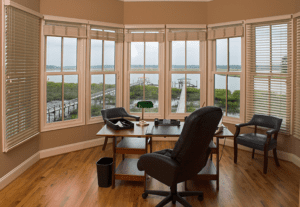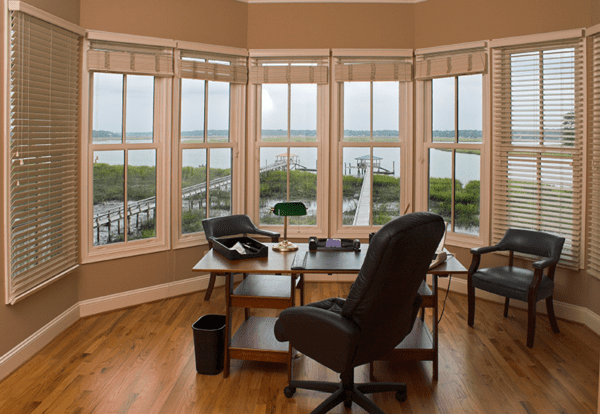 In this unique time of social distancing, working from home has become part of the new norm. We find ourselves in Zoom meetings, typing away on our home keyboards, and making office calls while making breakfast for the kids. It is the way of the world now and very possibly a new way to do business for the future. We find ourselves unprepared for disruptions, unable to stay focused, and drifting off to do household choirs instead of that next spreadsheet that our boss needs. These are real problems that the American workforce is now facing. Building a home office can help you tackle these distraction issues and help you stay organized in ways you never thought possible. We put together some great home office tips that are functional, stylish, and game-changers for your future as a stay-at-home employee or boss.
In this unique time of social distancing, working from home has become part of the new norm. We find ourselves in Zoom meetings, typing away on our home keyboards, and making office calls while making breakfast for the kids. It is the way of the world now and very possibly a new way to do business for the future. We find ourselves unprepared for disruptions, unable to stay focused, and drifting off to do household choirs instead of that next spreadsheet that our boss needs. These are real problems that the American workforce is now facing. Building a home office can help you tackle these distraction issues and help you stay organized in ways you never thought possible. We put together some great home office tips that are functional, stylish, and game-changers for your future as a stay-at-home employee or boss.
1) Consider the space. Do you have an extra bedroom? Or do you have unutilized space that can convert into a home office? A good-sized home office space should be a minimum of at least 100 sq ft or a small bedroom size. For those who do not have any spare space, consider adding an addition to your home or converting a garage into an office space. Speak to your accountant about possible tax write off.
Wherever space is, make sure that you are considering traffic flow and your ability to withstand distractions. Do not put yourself into a closet with smushed seating. This will be your area to work for many hours each week. Your home office should take priority over the rarely used guest room or a toy area for the kids.
2) Consider Lighting. You will want good lighting in your home office. A small table lamp will not be enough light for long hours of work. Does the area have any natural lighting from a window? If not, can you have a window installed? Do you have good quality ceiling lights? Planning for the light in your home office is essential to help avoid headaches and eye strain. If your room does not have the lighting you need, consider contacting a professional to improve the situation.
3) Connectivity– Unless you are working strictly from paper, a home office will need to have the ability to connect to the Wi-Fi internet and possibly fax machine and or phone. Be sure that the space you have decided on has a good connection and several outlets. Your internet service provider can help you to install the proper equipment and set up your devices. We searched the web for recommended equipment and found that PC Magazine’s article, https://www.pcmag.com/news/working-from-home-101-must-have-devices-for-your-home-office-setup“, is full of great options for your home office.
4) Focus on room layout. Now that you know where your office will be and have determined your lighting and connectivity needs, it is time to plan the room layout. You will want to have space for shelving to hold any manuals or books that you need to reference, a place for a desk, and a comfortable chair, as well as where you want to place office equipment such as a printer, fax machine, phone, etc. It is a good idea to design this on paper first to avoid holes in the walls and back strain from moving the furniture too much.
5) Furnishings- Time to move into the home office with some solid, sensible furnishings. Choose a chair that is both comfortable and supportive to help avoid back and neck strain. Find a desk that works not only at the height you will need but will provide storage for pens, papers, files, and other staples. Computer, mouse pad, speakers, shelves, and a few personal items such as a plant or photos will complete the space.
Remember, this will be the hub where you will be working for many hours to come. Do not deceive yourself into thinking that the corner of the kitchen under a cabinet will be the best place for you to do your work unless you work great among the chaos, dirty dishes, and chocolate chip cookies left out. You deserve to make your home office the best possible working area.


